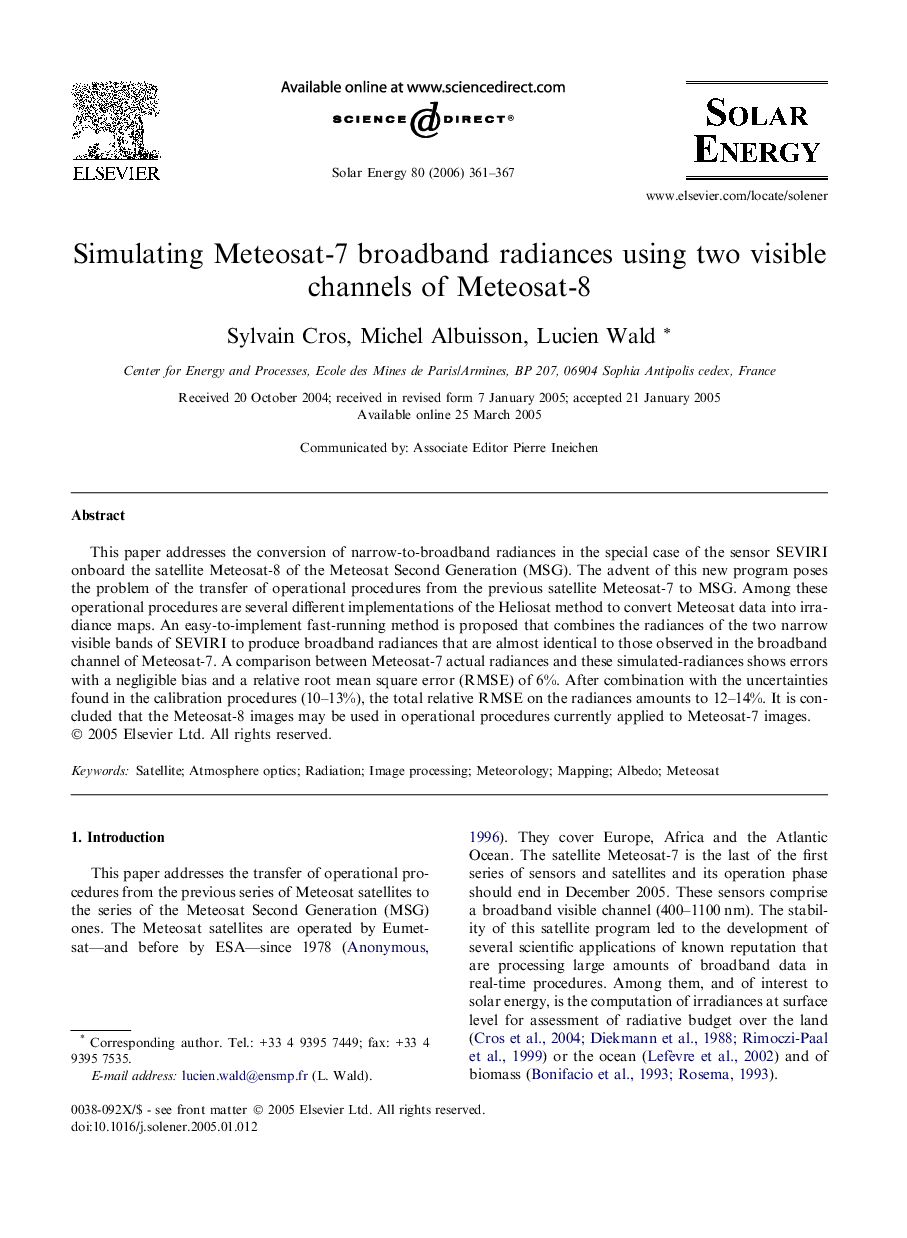| Article ID | Journal | Published Year | Pages | File Type |
|---|---|---|---|---|
| 1552408 | Solar Energy | 2006 | 7 Pages |
This paper addresses the conversion of narrow-to-broadband radiances in the special case of the sensor SEVIRI onboard the satellite Meteosat-8 of the Meteosat Second Generation (MSG). The advent of this new program poses the problem of the transfer of operational procedures from the previous satellite Meteosat-7 to MSG. Among these operational procedures are several different implementations of the Heliosat method to convert Meteosat data into irradiance maps. An easy-to-implement fast-running method is proposed that combines the radiances of the two narrow visible bands of SEVIRI to produce broadband radiances that are almost identical to those observed in the broadband channel of Meteosat-7. A comparison between Meteosat-7 actual radiances and these simulated-radiances shows errors with a negligible bias and a relative root mean square error (RMSE) of 6%. After combination with the uncertainties found in the calibration procedures (10–13%), the total relative RMSE on the radiances amounts to 12–14%. It is concluded that the Meteosat-8 images may be used in operational procedures currently applied to Meteosat-7 images.
